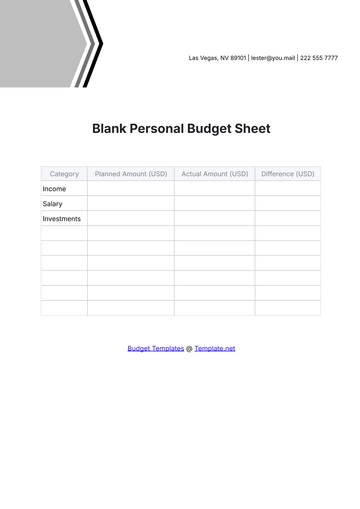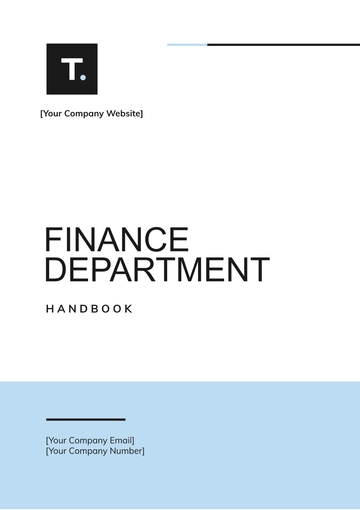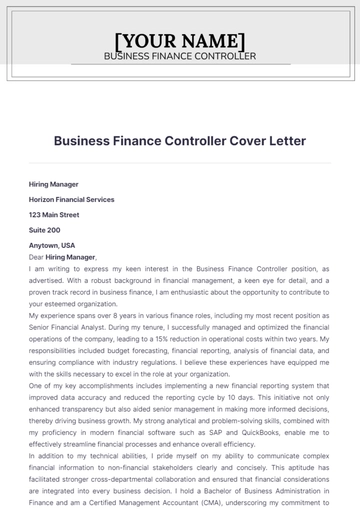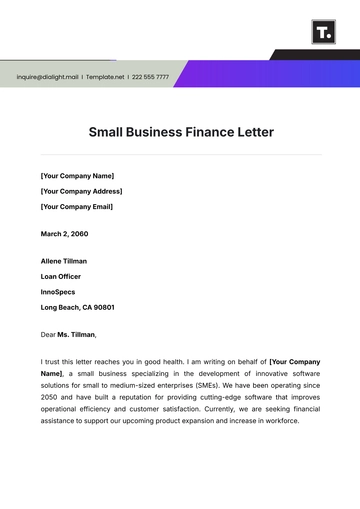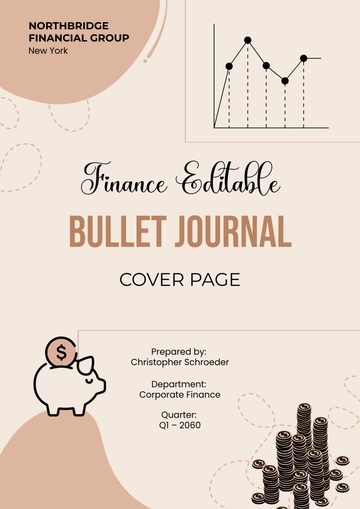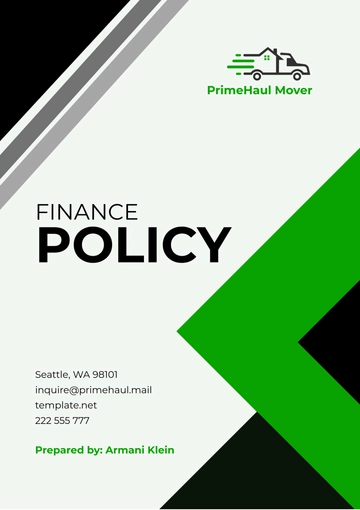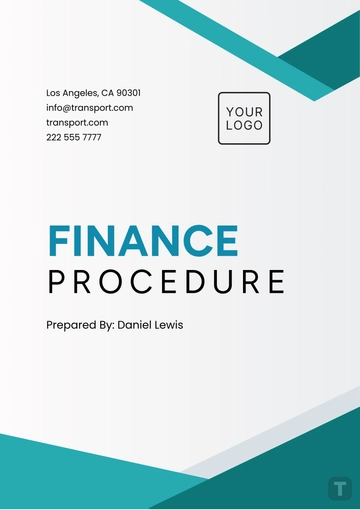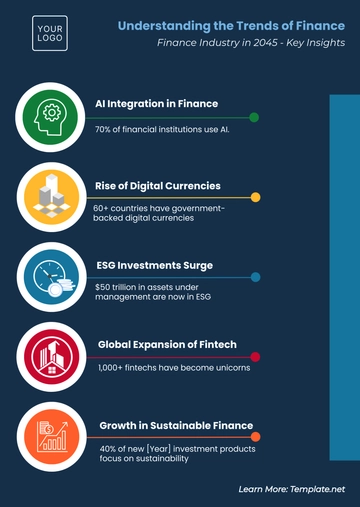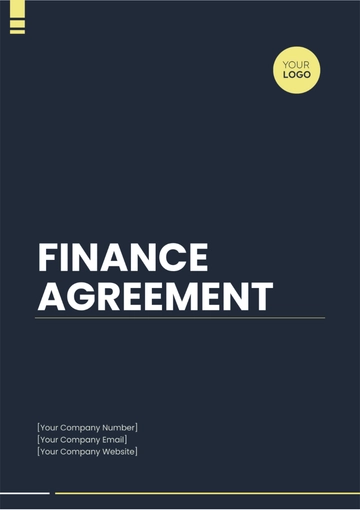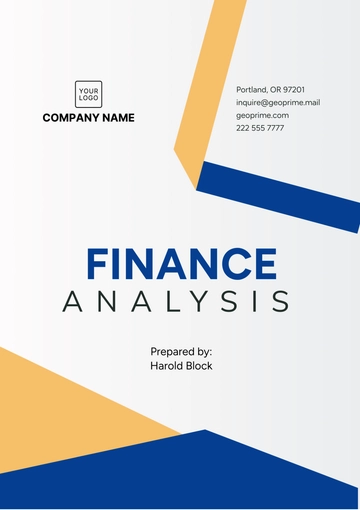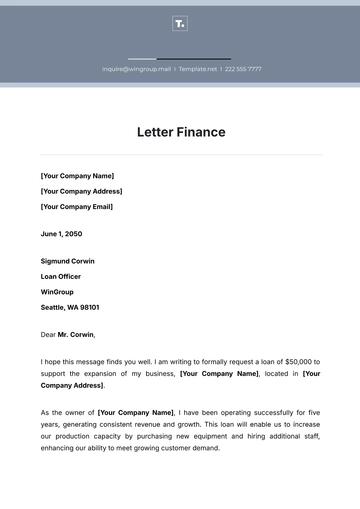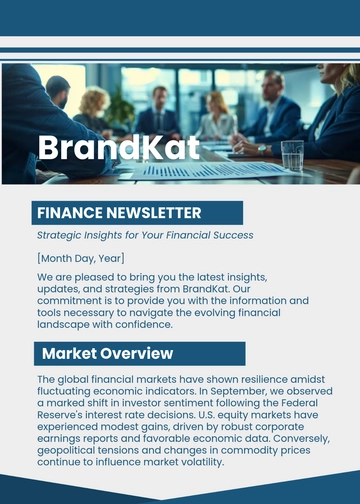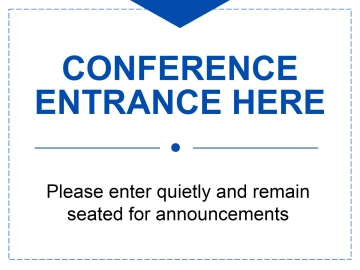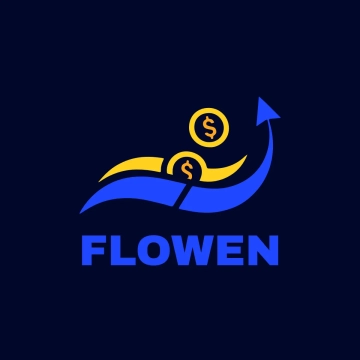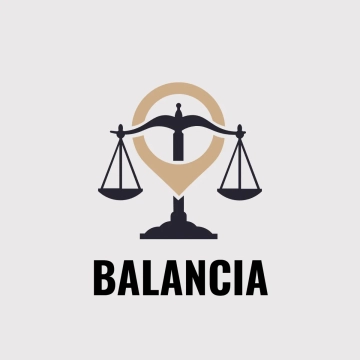Free Financial Risk Management Outline
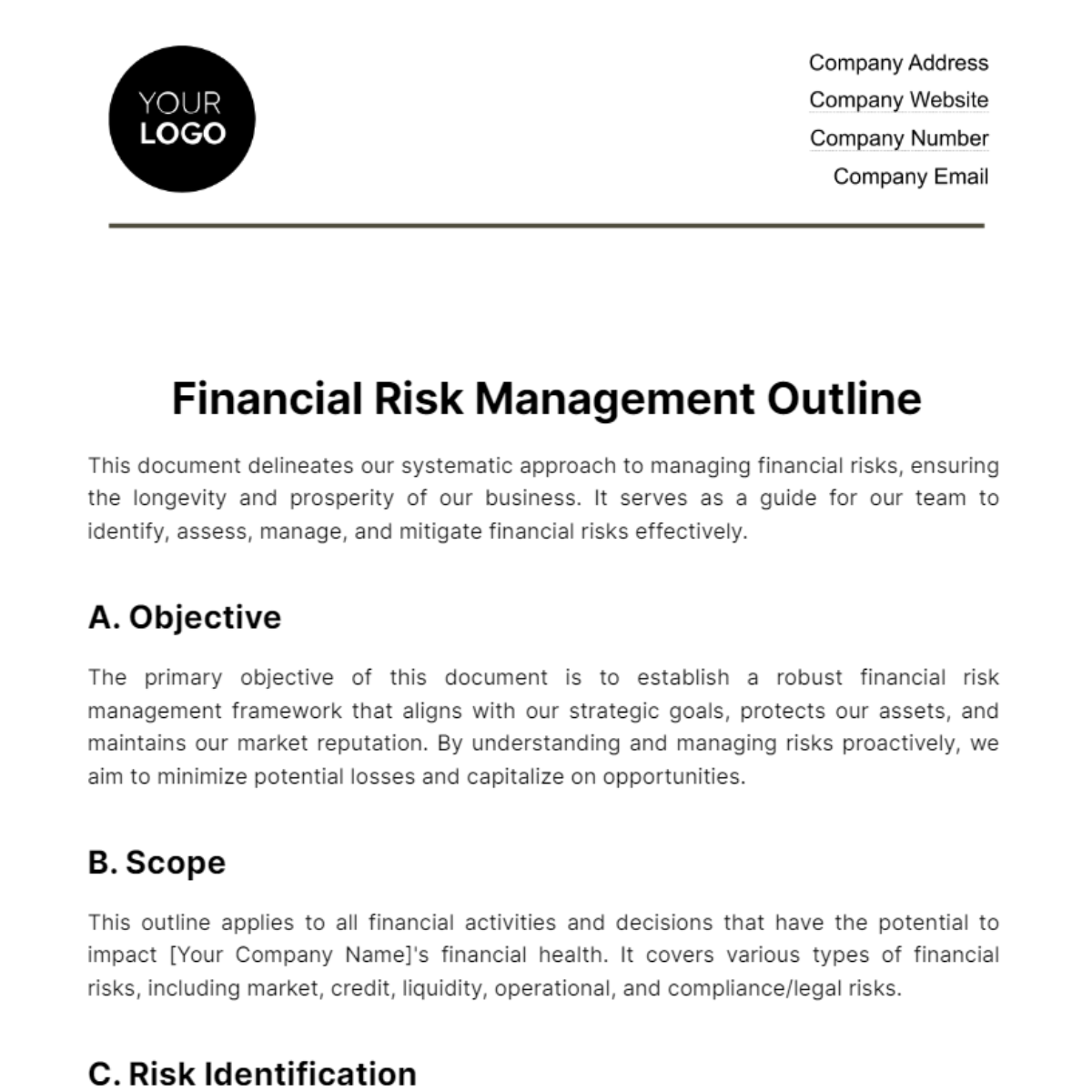
This document delineates our systematic approach to managing financial risks, ensuring the longevity and prosperity of our business. It serves as a guide for our team to identify, assess, manage, and mitigate financial risks effectively.
A. Objective
The primary objective of this document is to establish a robust financial risk management framework that aligns with our strategic goals, protects our assets, and maintains our market reputation. By understanding and managing risks proactively, we aim to minimize potential losses and capitalize on opportunities.
B. Scope
This outline applies to all financial activities and decisions that have the potential to impact [Your Company Name]'s financial health. It covers various types of financial risks, including market, credit, liquidity, operational, and compliance/legal risks.
C. Risk Identification
Market Risk: We identify risks associated with market fluctuations affecting interest rates, currency exchange rates, and stock prices.
Credit Risk: We assess the risk of default by our borrowers or counterparties, affecting our financial assets.
Liquidity Risk: We evaluate the risk of not being able to meet our short-term financial obligations.
Operational Risk: We look into risks arising from our business operations, including system failures, human errors, or external events.
Compliance/Legal Risk: We consider the risk of non-compliance with laws, regulations, or contractual obligations.
D. Risk Assessment and Measurement
We use various methods and tools to quantify and assess the identified risks. This includes:
Value at Risk (VaR) for measuring the potential maximum loss.
Stress testing to evaluate the impact of extreme market conditions.
Credit scoring models to assess the creditworthiness of borrowers.
E. Risk Mitigation Strategies
For each identified risk, we develop and implement appropriate strategies to mitigate the impact. These include:
Diversification of investment portfolio to reduce market risk.
Setting credit limits and performing regular credit reviews for managing credit risk.
Maintaining sufficient liquidity reserves and arranging backup credit facilities for liquidity risk.
Enhancing security measures and conducting regular audits to manage operational risk.
Regular training and legal reviews to ensure compliance with laws and regulations.
F. Risk Monitoring and Reporting
We establish a continuous monitoring system to track the level of risk and the effectiveness of mitigation strategies. Our reporting process includes:
Regular risk reports to management and the board.
Real-time alerts for significant risk events.
Detailed analysis of risk incidents and lessons learned.
G. Roles and Responsibilities
Clear roles and responsibilities are defined to ensure effective implementation of the risk management process. This includes:
The Board of Directors oversees the risk management framework.
The Risk Management Committee develops and reviews the risk policies.
The Risk Officer coordinates the daily risk management activities.
All employees understand and adhere to the risk management policies.
H. Review and Update
To ensure the relevance and effectiveness of our risk management practices, we regularly review and update the risk management outline. This involves:
Assessing changes in the risk landscape.
Incorporating feedback from stakeholders.
Updating the risk management policies and procedures accordingly.
I. Conclusion
At [Your Company Name], we are committed to maintaining a strong risk culture that supports informed decision-making and sustainable growth. This Financial Risk Management Outline is a testament to our proactive and strategic approach to managing financial risks, ensuring the continued success and resilience of our business.
- 100% Customizable, free editor
- Access 1 Million+ Templates, photo’s & graphics
- Download or share as a template
- Click and replace photos, graphics, text, backgrounds
- Resize, crop, AI write & more
- Access advanced editor
Introducing the Financial Risk Management Outline Template from Template.net: a professional, editable, and customizable solution for businesses. Efficiently identify, assess, and mitigate financial risks using our comprehensive template. Tailor it to fit your unique needs and navigate the complexities of financial risk confidently. Start editing the template with our Ai Editor Tool for robust risk strategy development.
